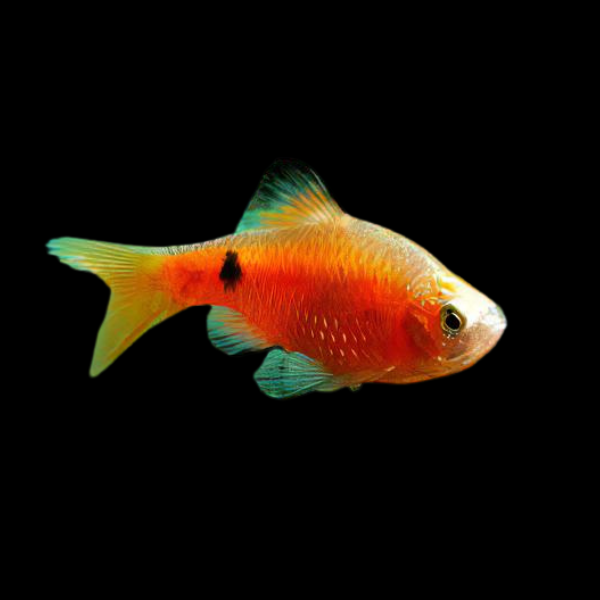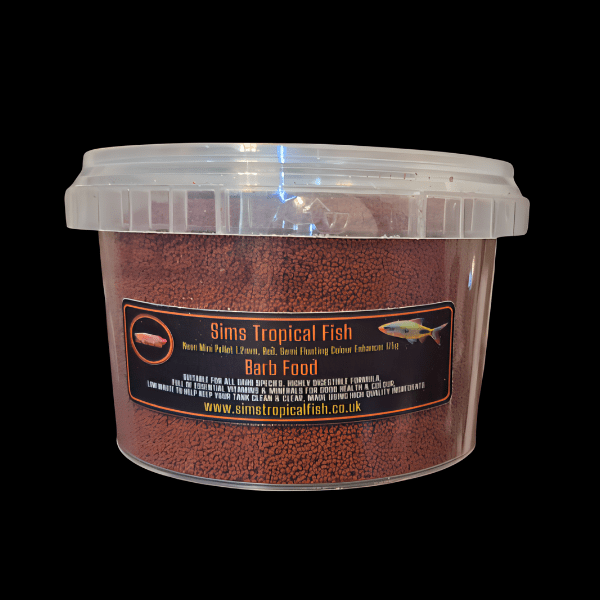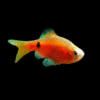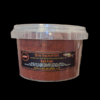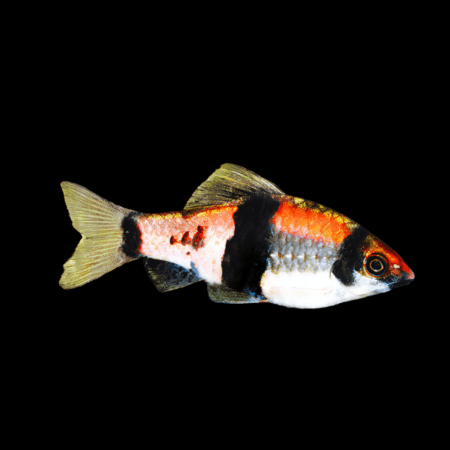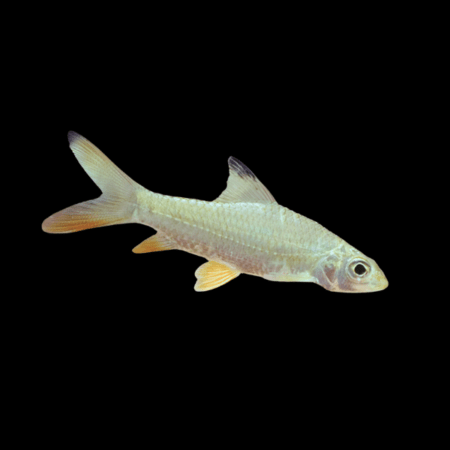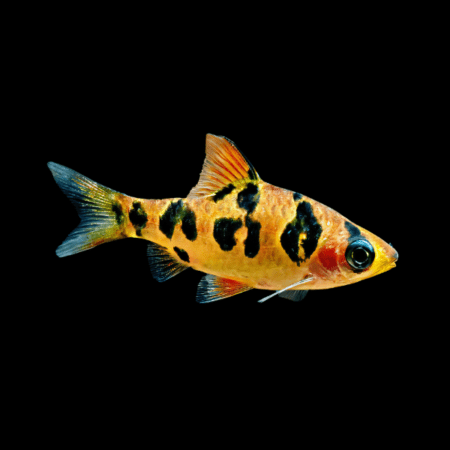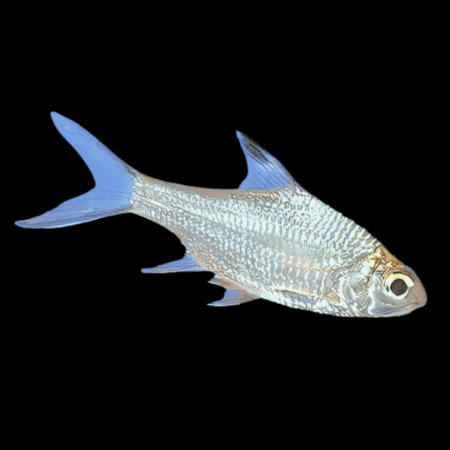Description
Black Fin Rosy Barb
Scientific Name: Pethia conchonius (selectively bred variant)
Common Names: Black Fin Rosy Barb, Black-Tipped Rosy Barb
Overview
The Black Fin Rosy Barb is a striking color variation of the Rosy Barb, featuring characteristic rosy-golden body tones with distinct black markings on the fins—most notably on the dorsal and caudal fins. Known for its lively and peaceful nature, this barb is well-suited to community aquariums and brings both color and constant movement to the tank. Like other Rosy Barbs, it thrives in cooler, well-oxygenated water and is great for beginner aquarists.
Key Information
Size: 2–3 inches (5–7.5 cm)
Lifespan: 4–6 years
Temperament: Peaceful, social, active
Diet: Omnivore – accepts a variety of prepared and live foods
Swimming Level: Mid to upper
Habitat & Tank Setup
Tank Size: Minimum 20 gallons (larger for groups)
Group Size: Best kept in schools of 5 or more to prevent fin-nipping
Substrate: Sand or fine gravel
Decor: Plants, open swimming spaces, smooth rocks, driftwood
Lighting: Moderate to bright
Filtration: Standard filtration with good water movement
Water Parameters
Temperature: 64–75°F (18–24°C)
pH: 6.0–7.5
Hardness: 5–15 dGH
Water Quality: Tolerant, but prefers clean, well-maintained water
Feeding
Diet Type: Omnivore
Suitable Foods:
Flakes, micro-pellets
Frozen or live foods (brine shrimp, bloodworms, daphnia)
Blanched vegetables (peas, spinach)
Feeding Frequency: 1–2 times daily
Tankmates
Compatible With:
Other barbs and peaceful schooling fish
Corydoras, danios, rainbowfish
Loaches, dwarf gouramis
Avoid:
Long-finned species (e.g., fancy guppies, bettas)
Slow-moving or shy fish that may be stressed by activity
Care Notes
Active and playful – provide enough space to minimize aggression
Show best behavior and color when kept in groups
Males exhibit deeper coloration during courtship or spawning
Regular water changes help maintain health and vibrant color
Fun Fact
The black-tipped fins of this variety become even more defined in cooler water with high contrast lighting and quality nutrition!

